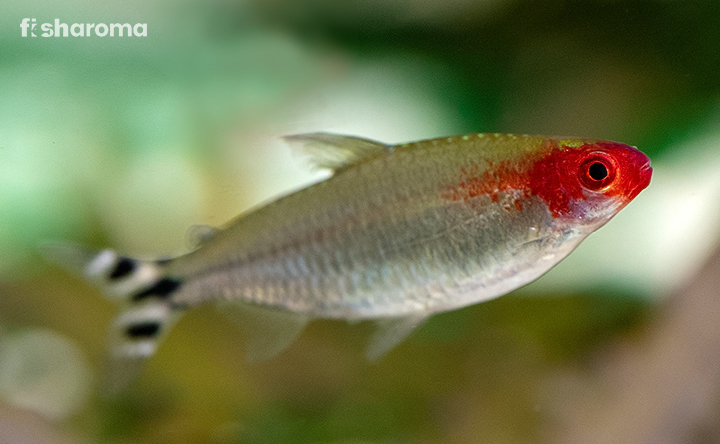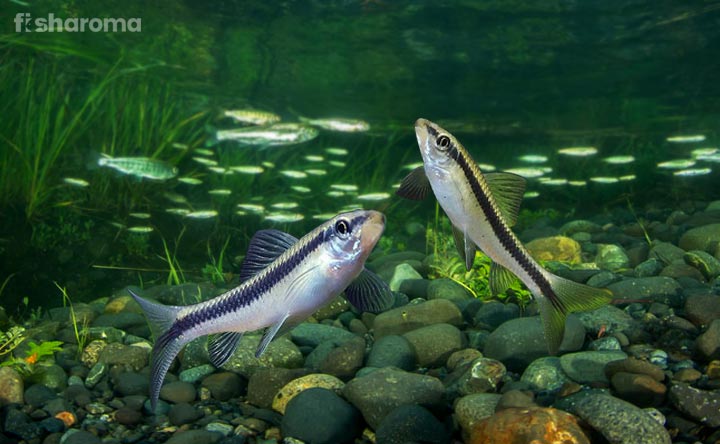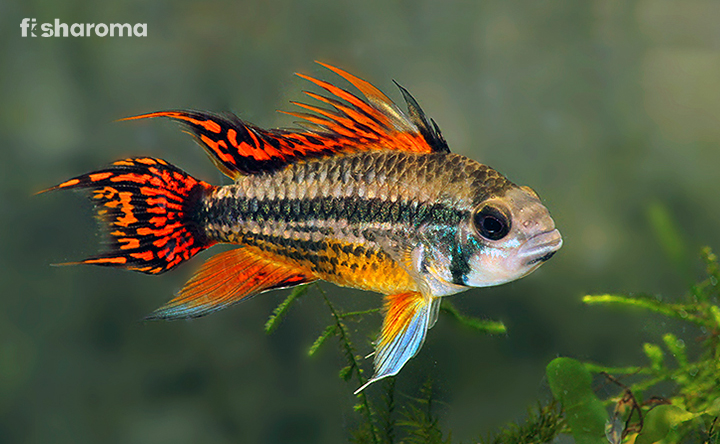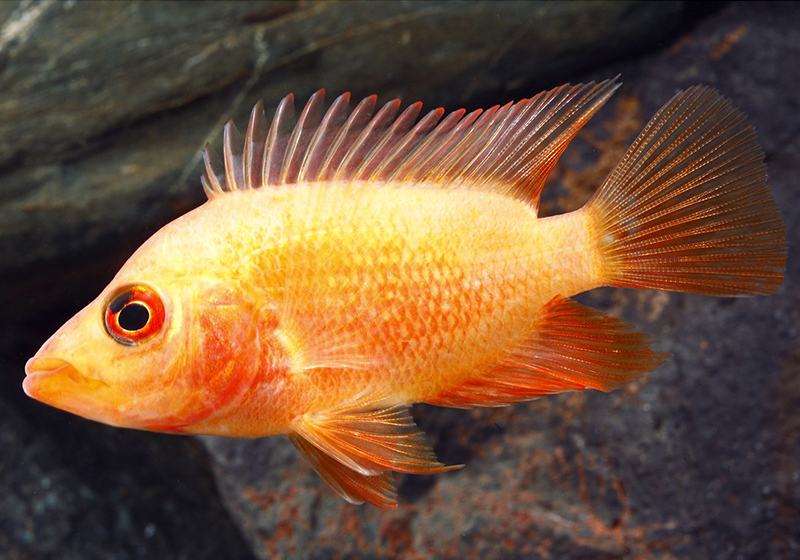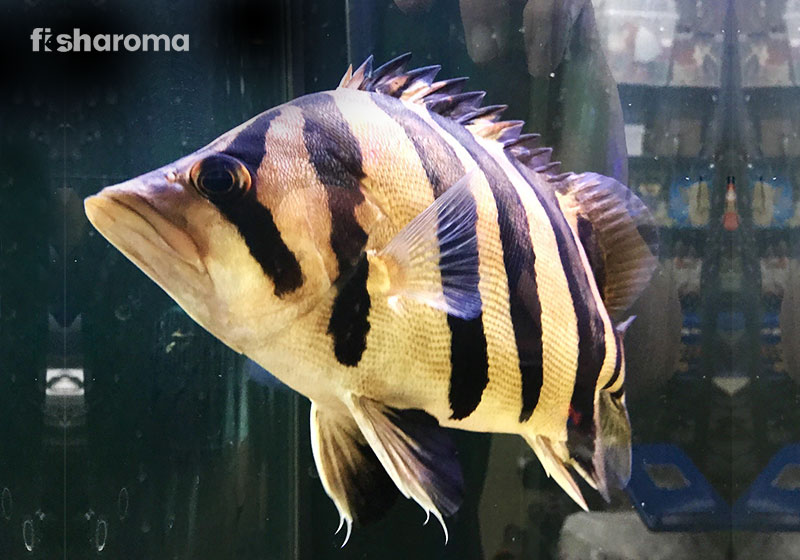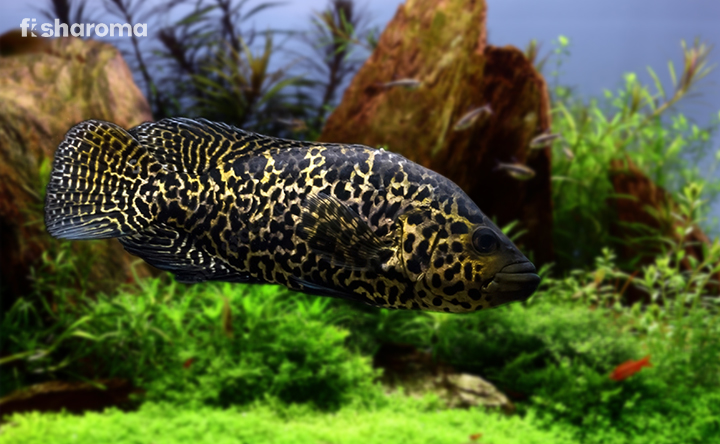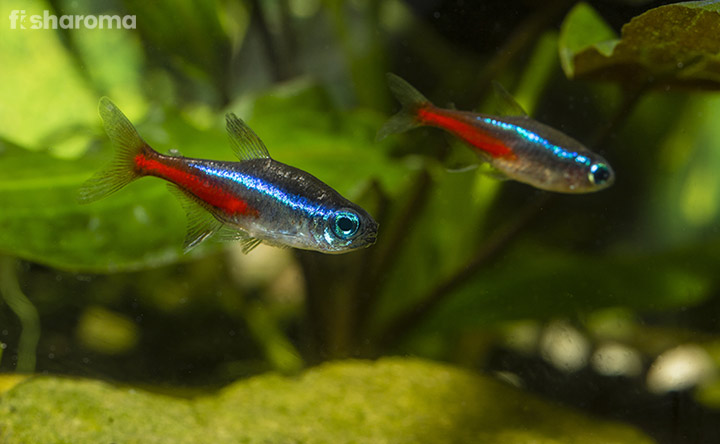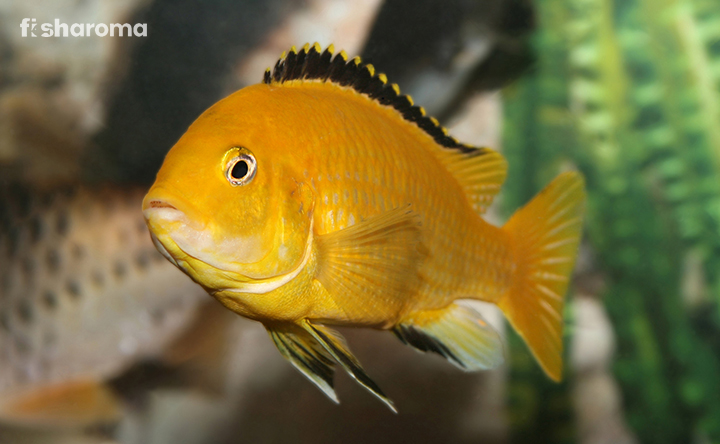Siamese Fighting Fish (Betta) – The Complete Care Guide
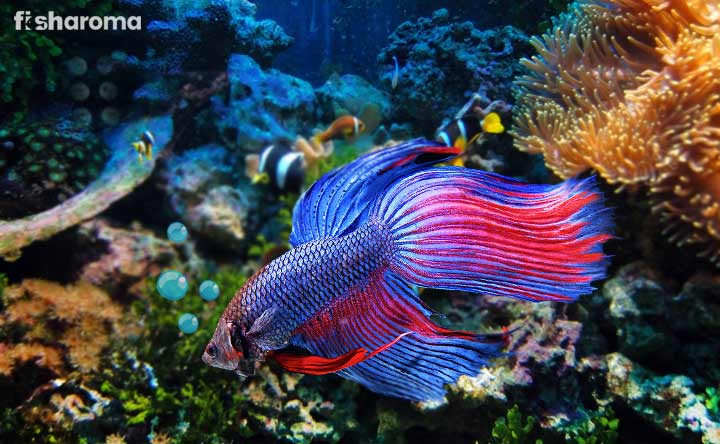
- Origin & Habitat of Siamese Fighting Fish
- Appearance of Siamese Fighting Fish
- Behaviour of Siamese Fighting Fish
- Types of Siamese Fighting Fish
- Lifespan of Siamese Fighting Fish
- Diet of Siamese Fighting Fish
- Tank Requirements for Siamese Fighting Fish
- Water Type for Siamese Fighting Fish
- Compatibility of Siamese Fighting Fish
- Breeding of Siamese Fighting Fish
- Siamese Fighting Diseases
- Difficulties in Petting Siamese Fighting Fish
- Summary
Just like any other fish, the Siamese Fighting Fish has its own individualistic care guide that helps it survive in an artificial environment, such as an aquarium. One look at it, and we know why it is extremely popular amongst fish pet lovers across the globe. But buying one, and taking care of one are two separate things. And this is where we will come in handy for you. We are going to breakdown everything that you need to know in order to let a Siamese Fighting Fish grow healthily in your tank.
Key Specifications of Siamese Fighting Fish
Firstly, let’s take a look at some of the key specifications of the Siamese Fighting Fish that will help you get a better grasp of understanding this beautiful beast.
| Scientific Name | Betta splendens |
| Family | Osphronemidae |
| Origin | Southeast Asia |
| Size | 3” (7.6 cm) |
| Color | Multi-color |
| Care Level | Easy to intermediate |
| Lifespan | 2-4 Years |
| Temperament | Feisty |
| Compatibility | Low |
| Tank Size | 5-Gallons (On average) |
| Diet | Insectivores |
Overview
A type of Gourami, Siamese Fighting Fish is a member of the Osphronemidae family. These fish are also simply known as bettas. They have derived this name from the word ‘Bettah’, which translates to ‘an ancient clan of warriors’. These fish are also known both for their beautiful outlook and their violent nature. The later quality is responsible for them engaging in quick intense fights with not only fish of other species, but also with their own kind too. So, it’s not a big secret as to why they are called Fighting Fish. In Thailand, they are known by their vernacular name ‘Plakat’, which means ‘biting fish’ in Thai.
They have been listed as vulnerable by the International Union for Conservation of Nature (IUCN).
Origin & Habitat of Siamese Fighting Fish
The origin of Siamese Fighting Fish is in Southeast Asia. To be specific, it is a native to the Mekong basin of Thailand and Malaysia. Humans have been collecting this fish for recreation purposes since the 19th century. Seeing their aggressive nature, locals organized ‘cock-fight’ like spars between its male members. Slowly and steadily, the fights became so popular that the then king of Thailand, Rama III, made the fighting contests licensed and taxed.
Found in abundance in the Chao Phraya River in Thailand, it is basically a freshwater fish. In their natural habitat, it thrives in the shallow waters of rice paddies, floodplains, swamps, slow-moving streams, and marshy lands. Nowadays, it can also be found in Cambodia, Laos, Vietnam and other parts of Southeast Asia.
They made their way to the West in 1892 when fish importer, Pierre Carbonnier imported it to France. They soon made their presence be felt in other parts of Europe, especially Russia and Germany.
Today, they can be seen at more places than ever before due to them being introduced to foreign lands, which has given rise to their non-native populations. In 2014, they were seen in the Adelaide River in Australia.
Appearance of Siamese Fighting Fish
There is a significant difference between the appearances of the Siamese Fighting Fish found in the wild and the ones that are bred in captivity. The main difference lies in the shape of their finnage and color, which we would discuss in the subsequent section.
They feature a torpedo-styled body. The presence of an upturned mouth enables them to eat from the water surface.
One of their distinctive features is their labyrinth organ, which helps them breathe air at the surface of a water body. Thus, they can not only intake oxygen underwater through their gills but also intake the same over the water surface. This is also the reason as to why they can survive in low-quality water or low-oxygen water.
Size of Siamese Fighting Fish
On average, they grow up to three inches (7.6 cm). The females are much shorter than their male counterparts because the fins in males are larger. In some of the variants of the Siamese Fighting Fish, the fins can be thrice the size of their body. The fins of the female are generally less elaborate than the males and they are much smaller too.
Color of Siamese Fighting Fish
As we mentioned earlier, there is a prominent difference between the colors of the Siamese Fighting Fish found in the wild and the ones bred in an aquarium.
The ones that are bred in captivity display more radiance in them along with brighter colors. This doesn’t always come naturally though. These fish have the ability to exhibit strong colors when they feel threatened. The different layers of pigmentation in their skin helps the breeders make this coloration permanent.
Although the most common colors are dark shades of blue and red, more colors have been also seen in them, including yellow, turquoise, lavender, pastel, white, green, copper, gold, purple, etc. Some fish even feature multi-color fins. The females are usually less colorful than the males. They not only come in solid colors, but also in patterns, thanks to the work of the breeders. This essentially means that in captivity, breeders have been known to manipulate the colors of bettas.
Behaviour of Siamese Fighting Fish
Regarded as one of the most aggressive freshwater fish, the Siamese Fighting Fish has earned quite a reputation for their combat skills, and evident from their name. They are highly territorial and very protective of their own spaces. Not fond of intruders, they will fight off anyone they feel threatened to, especially their own kind.
The aggression between the male Siamese Fighting Fish is noted from the fight they get into. In the wild, the fights although are ferocious, they take place for a shorter period of time. Usually, the fight ends when either of the males back off. But inside an aquarium, with nowhere to hide, the fights are even more intense and continue for a longer period of time, because the fights generally last till one of them dies.
Male bettas even get agitated by their own reflection or if they see another male in another tank that is in close sight.
A new trend of selling Siamese fighting-fish in transparent flower vases with a flower is on the rise in the market. As beautiful as it may seem, this is not a healthy environment for the fish and often leads to an early death for them.
Types of Siamese Fighting Fish
Based on the shape of their fins, Siamese Fighting Fish can be categorized into a dozen types. Some of the most prominent among them are as follows:
Feathertail
Resembling the feathers of a bird, the Feathertail Fighting Fish has a rough appearance due to the excessive branching of its fin rays.
Rosetail
The fins of a Rosetail Fighting Fish are so abundant that they overlap themselves in the shape of a rosebud.
Crowntail
In case of a Crowntail Fighting Fish, the fin rays extend themselves beyond the membrane and take the shape of a crown.
Half-Sun
A larger variant of the Crowntail, the Half-Sun Fighting Fish has a huge tail that spreads in a 180° fashion.
Lifespan of Siamese Fighting Fish
They have a short lifespan. They don’t live beyond 2-4 years. Although it is claimed that with proper care, they may live even further, chances of seeing a betta fish older than four years of age is extremely rare.
Due to their short lifespan, breeding starts within a year of their birth. But before we discuss the breeding procedure, let us help you understand the dietary plans that you need to follow in order to ensure that your betta lives a healthy life.
Diet of Siamese Fighting Fish
Siamese Fighting Fish are carnivores, precisely, insectivorous by nature. In the wild, they feed on insects and insect larvae. Their upturned mouth helps them grab any small insects that fall into the water surface. Even when kept in a fish tank, live food is always better for them. Contrary to popular belief, they cannot survive on plant roots only. The following serves as a great source of protein for them:
- Daphnia
- Glassworms
- Plankton
- Brine Shrimp
- Beef Heart
- Tubifex
These foods can be fed both in live or frozen form and even dried form works fine for them. In case you are unable to find them on a regular basis, you can opt for flake food too, but don’t forget to occasionally give your betta these live foods. Frozen food must always be thawed before feeding them to the fish.
Do not over-feed your betta. Two meals per day are ideal. Give that much food to them, which they can eat within two minutes. Whatever leftover is there after two minutes, remove them from the tank.
Tank Requirements for Siamese Fighting Fish
Providing a healthy environment for your fish is extremely important. A tank can never create the same natural habitat where a fish belongs. But certainly, if a couple of steps are followed, then your betta will feel more at home. Try and make sure all the following tank requirements are followed:
Tank Size
Although they may appear small in size, they need a lot of space for freely moving around the fish tank without destroying its long, wavy fins. In a cramped-up space of a small fishbowl, the fins of your betta will constantly hit the wall, thereby weakening it in the process.
Ideally, for one betta, you would need a five-gallon water tank. If you want to keep more than one betta in your aquarium or include fish of other species, the tank size will proportionally increase depending on how much space the other fish take.
Nature of Lighting
Do not place your water tank under direct sunlight. If you are using artificial light, make sure that it stays on for 12 hours of the day and stay off for the rest. This will not only help in controlling algae growth but will also give your betta plenty of time to rest.
Tank Lid
They are energetic, dynamic and agile. They frequently jump and leap over the water surface. Therefore, it is advised to use a tank lid for your aquarium. Do not forget to keep a space of at least two-three inches between the lid of the tank and the water surface.
This will not only allow the fish to leap and jump without falling out of the tank but will also help in their breathing process since bettas rise to the water surface to breathe air.
Filter
The presence of a filter will help in aerating, circulating and filtering the tank’s water. They break down and remove toxic waste from your aquarium. While selecting a filter, go for a filter with an adjustable flow rate since betas thrive in a large water tank with a low flow. This also resembles their natural habitat.
The packaging of the filter should be carefully seen to make sure it is well suited to the size of your tank. The setting of the filter must be relatively low since bettas are not used to strong currents.
Ornaments
You can add aquatic ornaments to decorate your betta fish tank. Not only they add to the beauty to your aquarium, but they also serve as good hiding spots for your betta, especially, if there is more than one betta in your tank. Try to keep at least one long ornament/cave that rise to the water surface. This will serve as a resting platform for your fish when it comes to the water surface to breathe in air.
Presence of Flora
The presence of flora, i.e. plants will help the betta feel that it is living in its natural environment. It is advised to choose artificial plants since natural plants make the tanks dirtier and require regular trimming. However, the leaves of your artificial plant must not be rough and sharp because that may tear off the fins of your betta.
The next focus area should be the water for your fish tank and what all things you need to keep in mind to make sure that your betta adjusts easily to the new environment of the aquarium.
Water Type for Siamese Fighting Fish
Air is to us what water is to a fish! Therefore, maintaining a good quality of water is vital. Now, although we have said that Siamese Fighting Fish can survive in low-quality water that has less oxygen, it does not mean that they need less oxygen than other species. This cannot be a permanent scenario. Please keep the following this in mind when selecting the water for your tank.
Temperature
Siamese Fighting Fish prefers relatively warm water since it mimics the tropical climate. A temperature of 74-80° F (23-27° C) is ideal for them. Keeping a submersible water heater ensures that this temperature is always maintained. Try to avoid heat lamps since they may overheat the water that may burn the fish.
pH Level
The pH level of the water should be around 6.8-7.4, and it should be checked on a weekly basis. Although not mandatory, you can buy a pH testing kit from your nearest pet store.
Mineral Level
If your tap water has a high amount of chlorine and/or chloramine in it, you need to use a water conditioner to remove them, since they are harmful to your fish. In addition, if the levels of nitrite (0 ppm), nitrate (<20 ppm) and ammonia (0 ppm) are off, it might jeopardize the health of your Betta. To correct this situation, you can use buffers or liquid acids to adjust their level.
Hardness
The general hardness of the water should be around 7-9 while its carbonate hardness should be around 5-8.
Cleaning Method
Try to clean your tank ornaments on a weekly basis. Do not use any harsh chemicals or soap to clean them. Plain lukewarm water should get the job done. You can use a gravel vacuum (siphon) to suck uneaten food and waste products from the bottom of the tank. Use a sponge to clean off the dirt accumulated on your tank walls.
Replacement Procedure
About 25% of the tank’s water should be replaced every two weeks. The new water should be dechlorinated and be of roughly the same temperature as of the water in the tank. Changing all of the water at once will not only remove the beneficial bacteria from the water but also suddenly change the pH and mineral level. It will become extremely difficult for your fish to adjust to the new water.
Compatibility of Siamese Fighting Fish
As we mentioned earlier, they are territorial in nature. Only one Siamese fighting fish must stay in a fish tank. However, if you are planning to keep more than one of them in your tank, then you should have an understanding of their gender equations and compatibility.
Male-Male Compatibility of Siamese Fighting Fish
Males are extremely aggressive towards one another. There should not be more than one male in one tank. In fact, even keeping two males in separate tanks but in close sight to each other will cause stress among them. They even get agitated by their own reflection.
Male-Female Compatibility of Siamese Fighting Fish
A male and a female Siamese Fighting Fish should be kept together only for breeding purposes. A male is less violent towards a female, but chances of aggressive behavior are always there. There should be good hiding spots for the female too.
Female-Female Compatibility of Siamese Fighting Fish
Females are comparatively better at living with each other than males. A sorority of females can co-exist if you have a large fish tank and if there are hiding spots for each fish. It is still suggested to avoid keeping more than one of them together in a tank.
Let us now take a look at the suitable and unsuitable tankmates for Siamese Fighting Fish.
Suitable Tankmates for Siamese Fighting Fish
Since they are violent in nature, keeping them with other violent beings is of course, not ideal. Choose calm, peaceful fish and other aquatic animals as companions for your betta. Bottom feeders are also a great idea since bettas spend most of their time at the top level of the aquarium. The following is a list of the tankmates that are well-suited as a company for your betta.
- Cory Catfish
- Feeder Guppies
- Red Cherry Shrimp
- Ghost Shrimp
- African Dwarf Frog
- Neon Tetras
Unsuitable Tankmates for Siamese Fighting Fish
The following fish should be avoided since they are pretty aggressive and may rip and tear the fins of the Siamese Fighting Fish.
- Rainbow Shark
- Red Finned Shark
- Tiger Barbs
- Cichlid
Breeding of Siamese Fighting Fish
Breeding among Siamese Fighting Fish should be done under careful observation. Male and female bettas should be kept together only during the short period of breeding.
Because of their short lifespan, they become capable of breeding when they are just a year old.
After placing the female betta with the male betta in the tank, you must wait until the male starts blowing a bubble nest. This is a sign that he is ready to spawn. Spawning is the release and deposition of eggs and sperms into the water by aquatic animals.
When both of them are ready to mate, they display intense coloration and start circling each other under the bubble nest. This is followed by the male betta wrapping its body around the female betta’s body. This leads to the female expelling the eggs that then get fertilized and starts sinking to the bottom of the tank. Seeing this, the males pick up the eggs and spit them into the bubble nest. Thus, starts the chain of the males tending to the brood. And this is when you should remove the females from the tank because the males can become very aggressive and protective about his eggs at this juncture.
Within a day or two, the eggs hatch and the babies start feeding off their yolk sack for the next three days. After gaining enough strength, they start swimming on their own. The males should also be removed at this point because they may eat their own babies by mistaking them for food.
Siamese Fighting Fish Diseases
They are prone to fin rots, which usually results from dirty water. If the water of your fish tank is not cleaned regularly or the water in the betta cup that you carried when buying your betta from the pet shop is not clean enough, it might cause bacterial diseases.
Over-feeding leads to constipation in bettas, which is the most common reason for death among them. Symptoms of constipation include swollen face and popped-up eyes that extend way beyond their face.
Difficulties in Petting Siamese Fighting Fish
Siamese Fighting Fish does not require your constant attention. They are moderately easy to take care of and do not require a lot of effort apart from the breeding procedure. They are pretty adaptable. As long as you give them enough space to live, they are easy to pet. The only downside is their aggression, which generally prohibits them to co-exist with each other.
Interesting Facts about Siamese Fighting Fish
- Some Siamese Fighting Fish have the ability to change their color throughout their lifetime due to the presence of a transposon element in the DNA.
- Males have more wave and texture to their fins than the females.
- Tapping on the walls of your tank that contain a Siamese Fighting Fish causes agitation to them.
- Milo, the protagonist of the American animated television series Fish Hooks, is a Siamese Fighting Fish.
Summary
Siamese Fighting Fish are an aggressive freshwater beast that can be beautiful and magnificent to look at despite their fierce temperament. The males come with bright radiant colors and long, wavy and attractive fins. They are territorial in nature and fight against each other when put in the same tank. So, it is advised to keep them separated, far away from each other’s sight.
Similar Freshwater Aggressive Fish for Your Aquarium
Similar aggressive fish that bears more or less same behavioral pattern as that of a Siamese Fighting Fish are as follows:
- Angelfish – Angelfish are aggressive in nature and do not get along with others of their kind. They are highly active and do not prefer large crowd in their vicinity.
- Rainbow Shark – Territorial in nature, Rainbow shark are recommended to be kept alone as they have the tendency to get aggressive with their tankmates.
- Plecostomus – Plecostomus are the sucker fish that stick to the walls of the tank. Although mostly they are peaceful in nature, they can get extremely aggressive during feeding time.
- Cherry Barbs – Known for creating chaos inside a fish tank, Cherry Barbs are territorial in nature and can get feisty when they see that they don’t have enough space for themselves.

